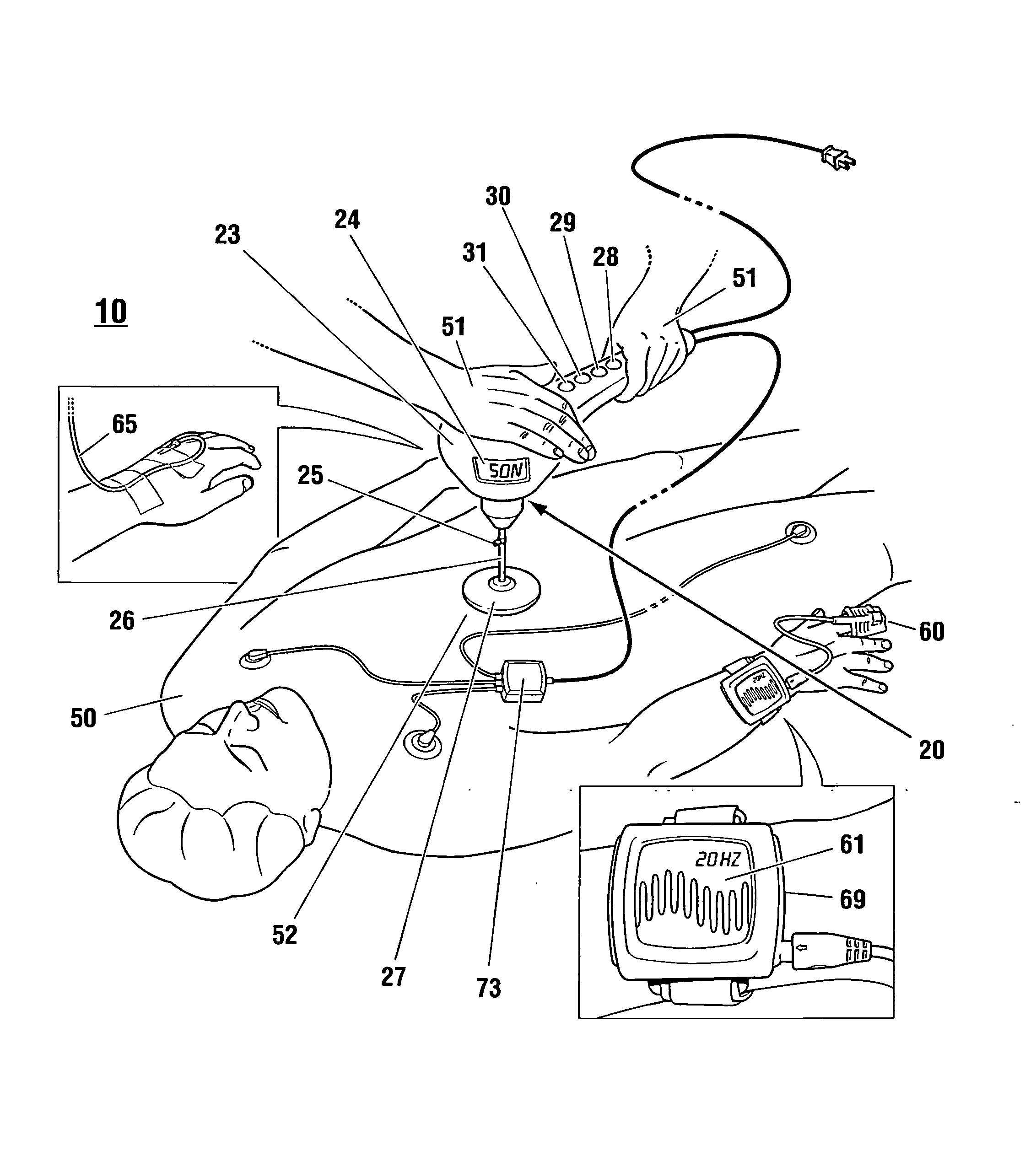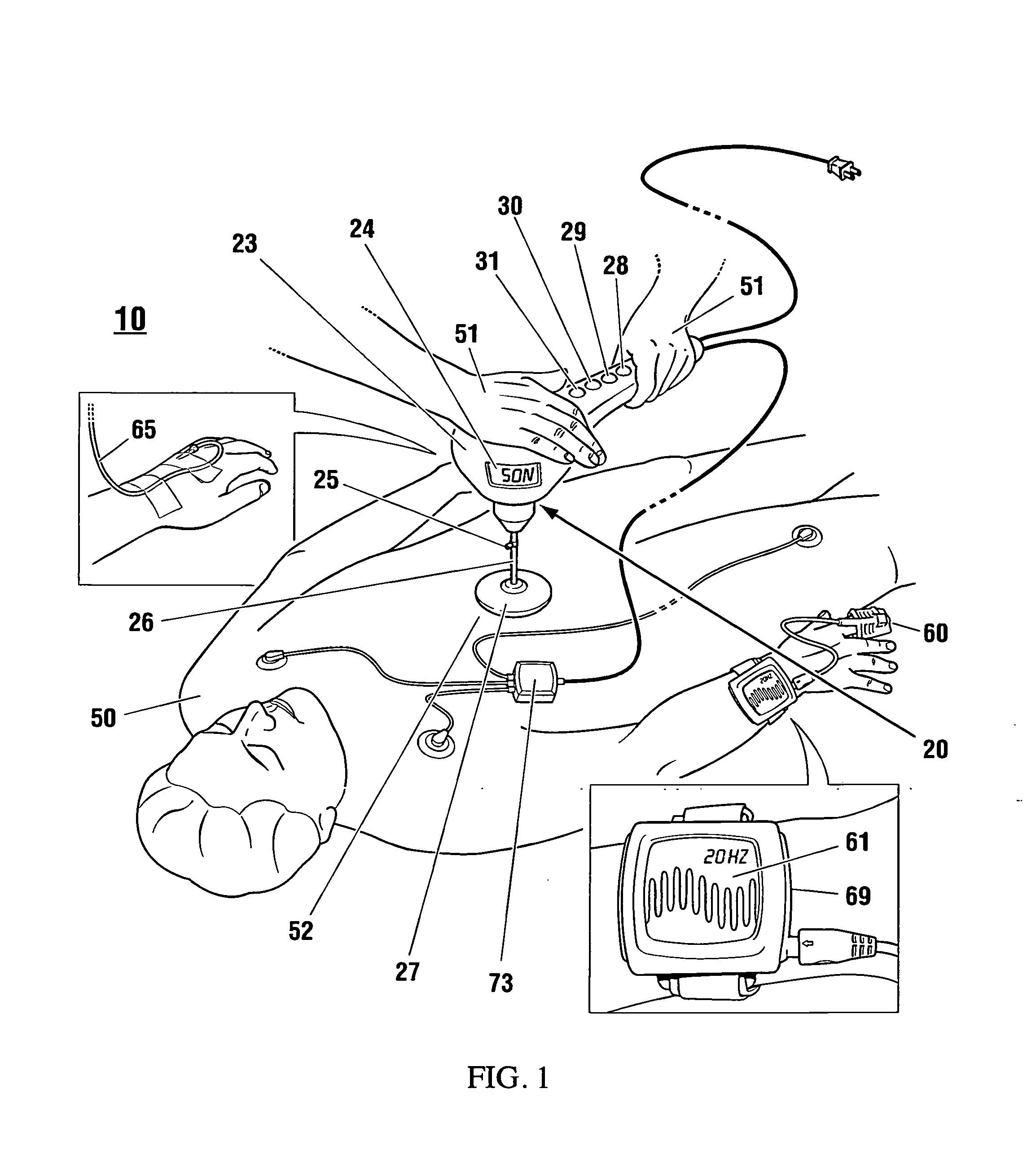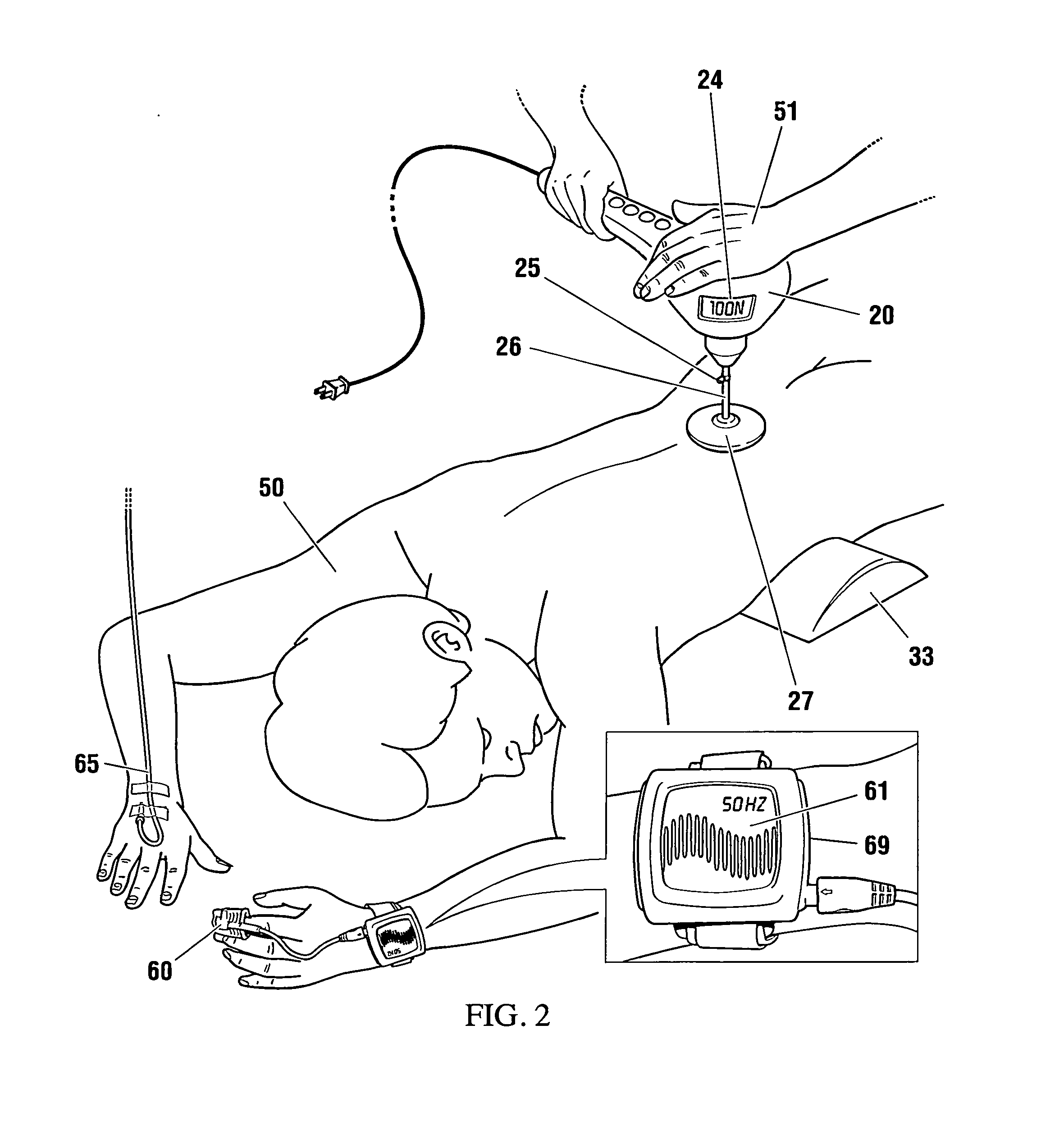However a
disadvantage of such invasive treatment (while very successful) is that substantial infrastructure is required which is not readily accessible in many hospitals world-wide, and even when available there is often a significant time
delay in delivering the patient which is often by inter-hospital transfer.
These difficulties result in a
delay in treatment (often greater than 90 minutes) with increased myocardial
necrosis with poorer clinical outcomes, and a reduction in likelihood of a successful and timely reperfusion.
In the case of AIS there are similarly a lack of invasive neurological special procedure units enabling preferred direct
catheter delivered procedures (such as intra-arterial
thrombolysis where a clot busting
drug is delivered directly to the clot).
LFUS applied transthoracically (via a unit placed over the chest wall) has however failed to show
efficacy in assisting coronary reperfusion in treatment of STEMI (i.e. the PLUS study—27 kHz), likely because the heart and
coronary arteries are acoustically shielded from
ultrasound from a thick overlying chest wall and
lung which does not transmit
ultrasound.
Also, LFUS at too high an intensity is known to burn the overlying
skin of a patient, and has been shown in some experiments to actually induce clotting and damage blood vessels.
However this technique (even if it were to work) requires a
highly skilled based procedure by a cardiac
sonographer to direct and maintain the
ultrasound administration which would rarely be available in the field to affect a first line response.
Moreover, it is unlikely that systemically delivered micro-bubbles would reach to any significant degree the blocked, culprit coronary artery (as the artery has no flow), which casts serious doubts on the prospective success of this technique.
TransCranial Doppler (TCD)—a skilled lower
power level transcranial diagnostic HFUS imaging procedure in the MHz ranges—has on the other hand reported some preliminary success in accelerating cerebral IV
thrombolysis in small numbers, particularly when applied in co-ordination with IV micro-bubbles, however again there is no assurance (and no physiologic reason to suspect) that the micro-bubbles would to any significant degree reach the blocked cerebral artery.
TCD also requires a
highly skilled approach by a
sonographer (a difficult procedure with the ultrasound applied through tiny fissures in the
scalp—impractical for emergency scenarios), and furthermore there are experimental reports that TCD does not even prospectively carry enough power to enhance
thrombolysis when emitted through the bones of the cranium.
More recent small clinical trials involving transcranial HFUS applied at a
higher power levels is again trending towards significant bleeding risks hence
casting serious doubts on the prospective use and adoption of this therapy, or its potential success in larger clinical trials.
This style of therapy (while common in the treatment of
kidney stones and the like) has not gained acceptance in the
emergency treatment of acute vascular obstructions or thrombotic obstructions, probably because thrombotic lesions are difficult (if not impossible) to conveniently image, and these style of applications are inexpedient for use as they require advanced training, a controlled environment, calculations, and specialized equipment to employ.
Furthermore, lithotriptic systems and other focused wave therapy techniques are generally limited to treatment of stationary targets within the
human body, hence applications to the
coronary arteries (such as in the acute treatment of coronary thrombotic lesions) cannot prospectively be performed.
As stated above, this
system is invasive, and thereby requiring great specialized skill and equipment to introduce a
catheter directly to the
thrombosis site, and thus has no utility as a first line measure in the field or in emergency room cases.
Generally however, non-invasively delivered vibration techniques within the infrasonic to low sonic frequency range (e.g. 1 Hz to 1000 Hz) has received little focus in the field of treatment of acute vascular occlusions.
This medical method, which was designed to sustain the life of the patient conjointly with the deliverance of thrombolysis (and not to act as an adjunct to thrombolysis per se), is limited to cardiac arrest situations, and the manual nature of the application of high displacement amplitude,
mechanical energy to the chest wall by human hand would be labor intensive, potentially tiresome to an operator, and would quickly cause undue harm to a patient if delivered for sustained periods.
Moreover a more recent large
clinical trial assessing the
pairing of IV thrombolysis with CPR (i.e. TROICA trial) ended in futility, in that the benefit of the combination could not be statistically proven.
Whole body shaking methods such as Sackner describes are not well suited for treatment of acute thrombotic lesions or emergency
blood flow disturbances as relatively small (or insignificant) localized forces to the targeted vascular regions themselves are generated.
Finally the treatment method invariably also aggressively shakes the patient's head which is potentially dangerous and inappropriate if the
treatment system where ever to be used conjointly with thrombolytic therapy in STEMI cases (due to increased risks of intra-cerebral hemorrhage).
This technique would not be well suited to emergency STEMI (or AIS) situations as the squeezing is administered at much too low a frequency (typically one inflation / deflation
cycle per second) and is applied unnecessarily far distant from the vasculature of the heart or brain hence severely limiting the waveforms energy and propagative capability to assist clearance of an acutely thrombosed (or cerebral arterial) vessel.
This technique is also not portable and very cumbersome to use (hence not expedient for use in an
emergency procedure—particularly if delivered in the field or ambulance), and thereby has found no utility in treatment of acute
vascular disease or
thrombosis.
The '549 patent is not directed to the treatment of emergent coronary incidents or acute thrombotic events, hence there are inherent limitations to the disclosed
system.
For example, the disclosed
single probe to single rib-space
coupling is a sub-optimal means of vibration to chest wall transmission and penetration to the
coronary arteries (which are variably situated within the
thoracic cavity), and the timed application of vibration limits its effectiveness as there is no vibration during
systole.
The requirement of an invasive step of introducing a transesophageal probe to enable confirmation of adequate vibration penetration to
vascular tissue targets is not ideal (nor preferred) in emergency settings.
This device is not used for therapy, and is inexpedient (prospectively) in the location and disruption of tissue targets as the sonic
vibration source is not advantageously placed in the same position as the
ultrasonic imaging probe upon the
body surface, such as to conveniently enable an operator to directly visualize and target the vibration through an optimized sonic penetration window overlying the vascular target.
 Login to View More
Login to View More  Login to View More
Login to View More 


